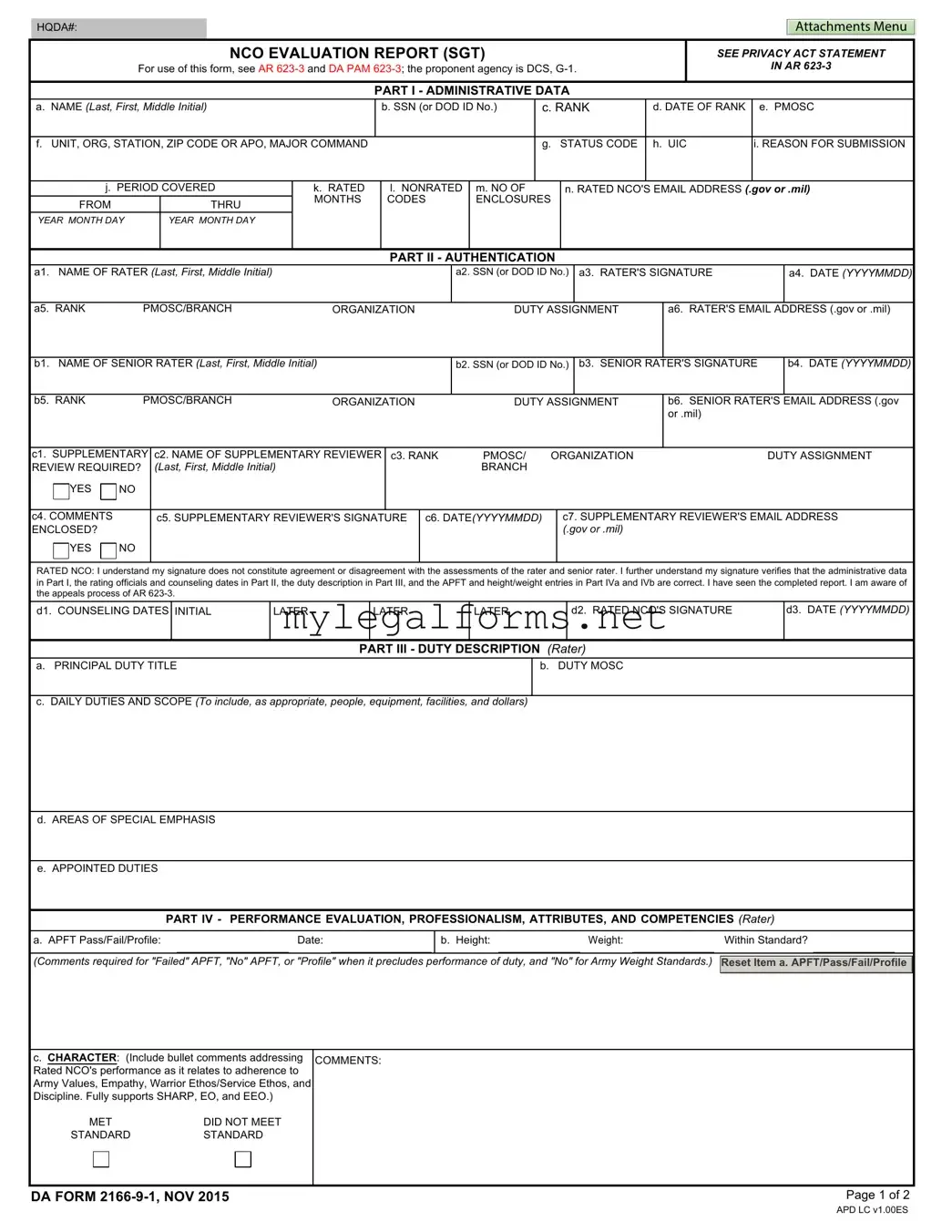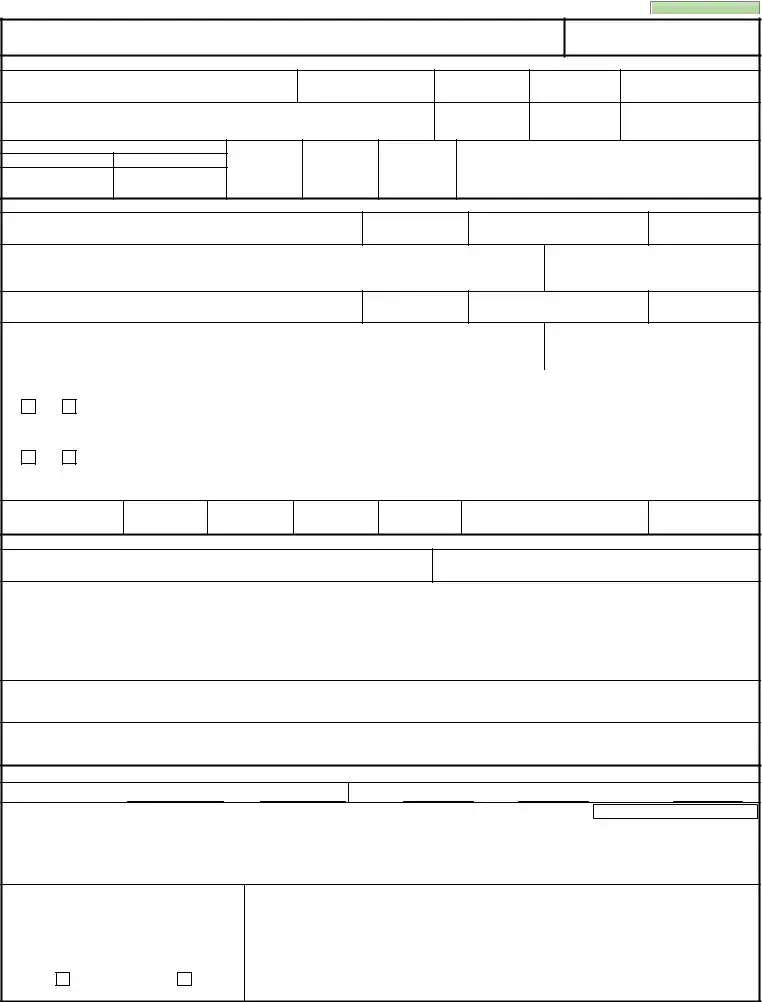Filling out the DA 2166-9-1 form can be a daunting task, and many individuals make common mistakes that can lead to delays or complications in the evaluation process. One frequent error is failing to provide complete and accurate personal information in Part I. This includes the name, Social Security Number, and rank. Omitting any of this information can cause significant issues, as the form may be considered incomplete.
Another mistake often seen is incorrect dates in the "Period Covered" section. It is crucial to ensure that the start and end dates accurately reflect the evaluation period. Inaccurate dates can lead to confusion and may affect the validity of the evaluation. Additionally, some individuals forget to include the reason for submission. This is a vital piece of information that helps clarify the context of the evaluation.
Many people also overlook the importance of the Rater’s and Senior Rater’s signatures. Without these signatures, the form cannot be processed. Ensure that all parties involved sign and date the form in the appropriate sections. Failing to do so can result in delays and may necessitate a resubmission of the form.
Another common pitfall is neglecting to verify the email addresses provided. The form requires .gov or .mil email addresses, and any errors here can hinder communication regarding the evaluation. Double-checking these details can save time and prevent unnecessary follow-ups.
In Part III, some individuals may provide vague or incomplete descriptions of daily duties and responsibilities. It is essential to be specific and thorough, as this section significantly impacts the overall evaluation. Describing duties in detail helps provide a clearer picture of the rated NCO's contributions and capabilities.
Furthermore, many fail to address the required comments in the performance evaluation sections. Simply checking a box without elaborating can undermine the evaluation's effectiveness. Providing specific examples and observations strengthens the assessment and offers valuable insights into the rated NCO's performance.
Another mistake is not following the guidelines for the APFT and height/weight entries. If an NCO has failed the APFT or does not meet height and weight standards, comments are mandatory. Ignoring this requirement can raise questions about the accuracy of the evaluation.
Lastly, individuals sometimes forget to include enclosures or attachments that are relevant to the evaluation. This could include previous performance evaluations or other supporting documents. Omitting these can lead to a lack of context for the current evaluation, potentially affecting the overall assessment.
In conclusion, taking the time to carefully review and complete the DA 2166-9-1 form can significantly impact the evaluation process. By avoiding these common mistakes, individuals can ensure that their evaluations are accurate, complete, and reflective of their true performance.


